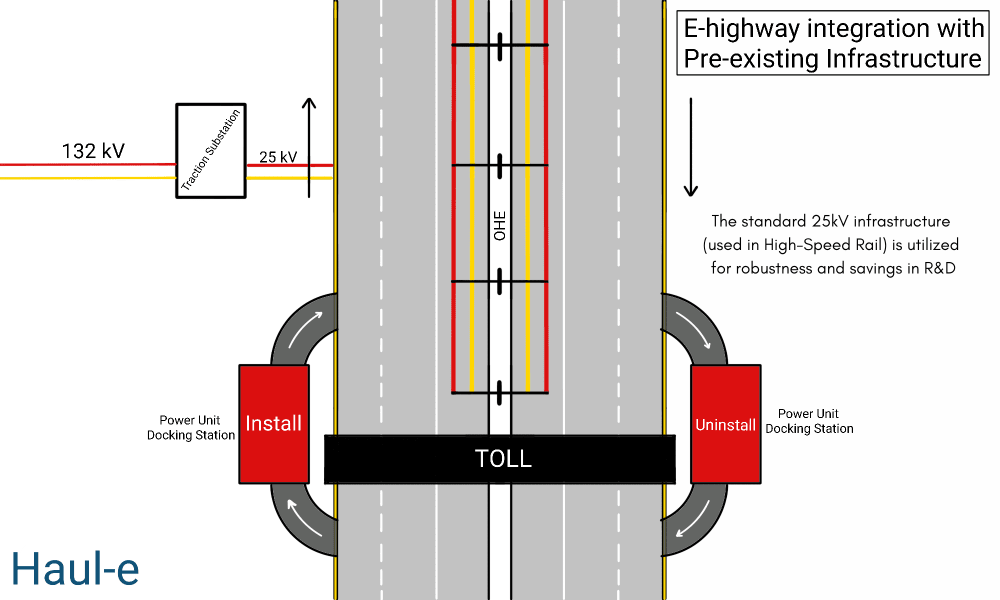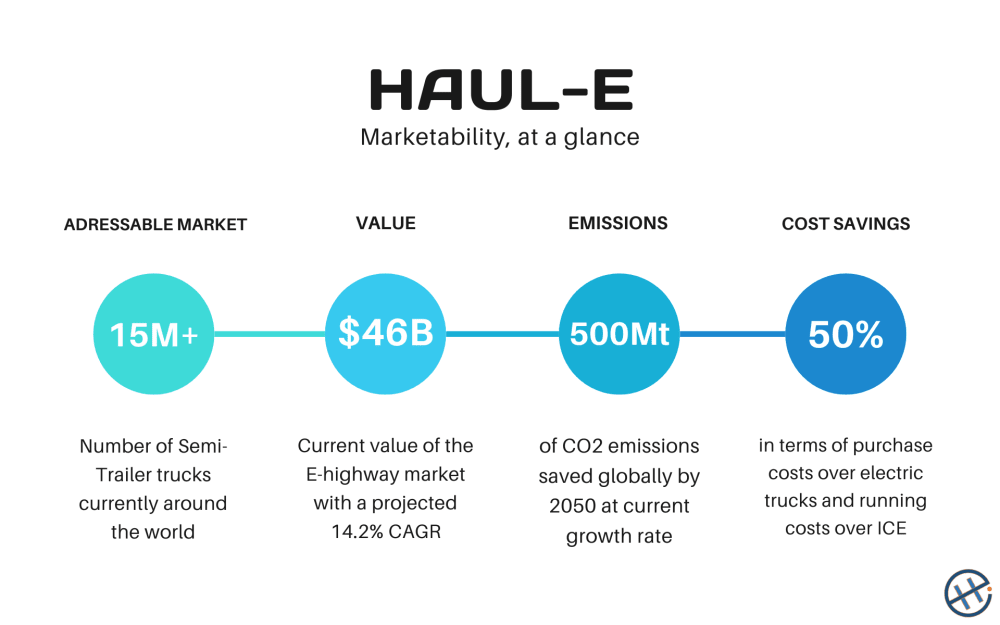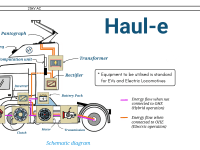Introduction
Haul-e addresses the urgent need for sustainable electrification in the trucking industry, which has a significant carbon footprint. In India, road transport handles 60% of freight traffic, making the decarbonization of trucks, crucial. While electric trucks are a promising alternative, they face challenges like high battery costs, weight, low range, charging times, and battery recycling issues. The Tesla Semi’s 1000kWh battery for example is 50,000X larger than a smartphone battery, highlighting future battery recycling problems.
Electric Highways
Electric Highways provide trucks with power on-the-go, eliminating the need for large batteries. This system powers trucks directly via overhead cable and pantograph, necessitating only small battery packs for short distances off the highway. However, this demands brand-new, expensive trucks, posing a challenge for small truck owners.
Haul-e: We innovate by retrofitting existing diesel trucks to be compatible with this system. This retrofit involves a two-part solution:
- Basic Powertrain: The first part is a permanently installed basic powertrain, including a motor, controller, battery, inverter, lockable-clutch and sensors. This works as a hybrid system off the highway, enhancing fuel efficiency by 1.5X without changes in driving style, recharging the battery through regenerative braking.
- Power Unit: The second part is the power unit which is installed at the docking station, enabling truck to run on the electrified-lane. The driver switches to fully-electric, utilizing the motor for acceleration and braking. In cases of power failure, the truck can revert to diesel. Before exiting the highway, the unit is uninstalled.
Working
The truck extends the pantograph establishing an electrical connection. The clutch is locked, mechanically disconnecting the engine and truck is operated as a manual transmission truck whose gears are shifted only by taking foot off-the-throttle, without needing clutching.
Advantages
- Costs: Low running-costs, acquisition-costs, reduced maintenance, economical refrigerated transport are all important factors, especially when we lose 33% of food to spoilage.
- Carbon Footprint: Sustainable electrification without distressing rare-earth reserves, while evading battery recycling problems can be achieved. Over time, diesel engines can be replaced with hydrogen fuel cells for greater efficiencies.
- Safety: One major issue that we address, is equipping basic trucks with safety-tech such as adaptive cruise control and automatic emergency braking by only utilizing the electric motor, without even modifying the brake system. This has the potential to save thousands of lives each year.
- Reduced Workload: The pantograph automatically adjusts to ensure even wear and stable connection by moving itself laterally with respect to the truck. Sign recognition is utilized to switch the Dis-jointer, on/off automatically while crossing a ‘neutral-section’. These aids reduce the driver's workload, allowing to focus on driving.
Conclusion
Haul-e brings large-scale electrification to the masses, combining existing technologies with innovative solutions for a sustainable future. By enabling pre-existing diesel trucks to become compatible with electrified highways, we offer an immediate and practical solution to decarbonize the trucking industry, reducing emissions and enhancing efficiency while addressing future waste management issues. This revolutionary approach paves the way for a greener, more efficient transportation system, empowering us to tackle climate change effectively.
Like this entry?
-
About the Entrant
- Name:Gagan Jain
- Type of entry:teamTeam members:
- Vanshika Gupta
- Gagan Jain
- Patent status:none









